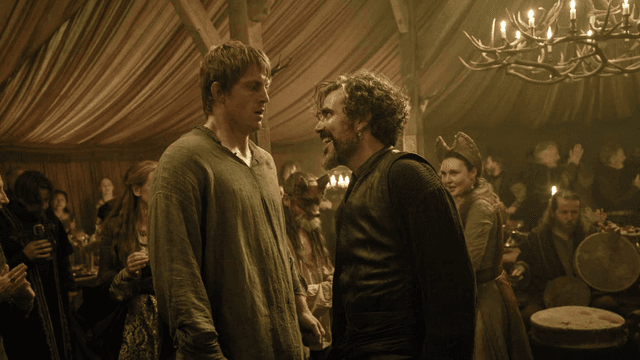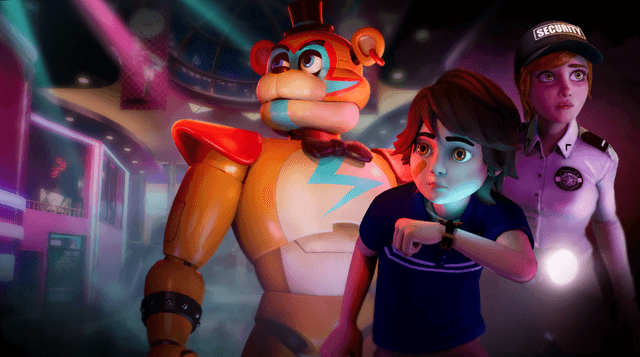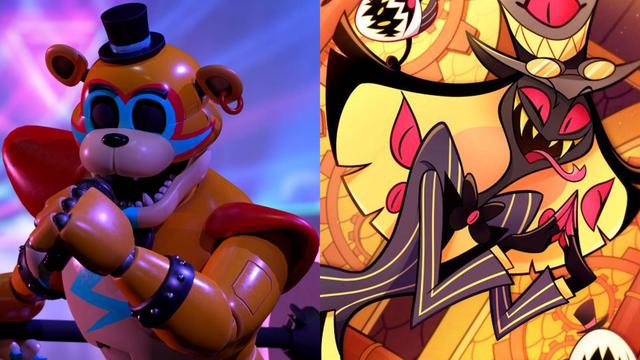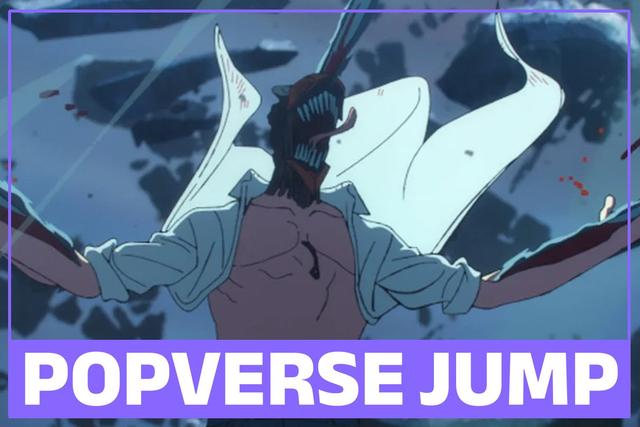If you click on a link and make a purchase we may receive a small commission. Read our editorial policy.
Star Wars: Who and what the Empire's Inquisitors are
The problem with Darth Vader is that he can’t be everywhere at once. That's where the Empire's Inquisitors come in

The problem with Darth Vader is that he can’t be everywhere at once. The massacre of Order 66 at the climax of Revenge of the Sith was a great start for Emperor Palpatine’s designs to exterminate the entire Jedi Order, but not even he expected it to capture everyone. After all, there are ten thousand Jedi across the Galaxy, and not all of them were in the temple, or traveled with a company of sleeper agent clone troopers. Through the Empire’s reign, one of Darth Vader’s primary responsibilities was to find the stragglers and snuff them out. Once you lose the element of surprise, after all, a mere group of footsoldiers isn’t enough to take out any Jedi. To take out the remainders, you have to meet them on their level.
But it’s a big galaxy, and even Darth Vader can use the help. Such is the function of the Inquisitorius (or Inquisitors), a special Imperial task force of Force Sensitive servants of the Empire – not Sith, a title reserved for masters of the Dark Side of the Force, but still skilled as any Jedi Knight in their own right. For the past few years, it seems like the Inquisitors have been everywhere. In the Star Wars Jedi video games, in the Obi-Wan Kenobi television show, and it looks like at least one will be showing up in Ahsoka, too. They almost seem like Vader’s understudies, when you can’t afford his quote for a non-movie project. Well, even in fiction, that’s more or less the function they serve. And they’ve been part of Star Wars longer than you might think.
The early Inquisitors

Imperial Inquisitors go back as early as the NPR Star Wars radio drama of 1981, which expands on the script of the original Star Wars film with more details about Luke, Leia, the Empire and the Rebel Alliance than the original film’s two-hour runtime could afford. It’s only a quick reference, though, and we wouldn’t actually see them in any form of Star Wars fiction for the first time until after the Empire’s fall – as antagonists in the first six books of Kevin J. Anderson and Rebecca Moesta’s Young Jedi Knights novel series in 1995, set 20 years after the film trilogy and starring Leia and Han’s twin children and Jedi in training, Jacen and Jaina Solo. They would play an even more active role in Jude Watson’s Last of the Jedi novels from 2005-2008, set between the prequel and original film trilogies, as constant pursuers of Order 66 survivor Ferus Olin.
As befitted their title, Inquisitors at this time were envisioned primarily as Imperial interrogators, brought in to break the minds of Force users when interrogation droids like the ones used on Leia in A New Hope couldn’t cut it. But they were also employed by the Emperor on assignments for which those without skill in The Force were unequipped, such as seeking out and destroying the remainders of the Jedi Order – a function they continued to perform even decades after the Emperor’s death.
The Inquisitors of these early Star Wars novels typically wielded standard-issue red bladed light-sabers, wore blood-colored robes, and in later years were equipped with amulets that could hide their presence in The Force from their Jedi targets. Like most Imperial divisions, there was a clear chain of command with Inquisitors reporting to High Inquisitors, who answered to the Grand Inquisitor. There was a succession of at least four Grand Inquisitors during the early Star Wars Expanded Universe, most of them human.
Narratively, the Inquisitorius was a way to keep the stakes high for Force sensitive story protagonists, creating a sense of danger for our heroes when they could mow through typical Imperial forces with little risk. And sure, Vader could do that, but it gets tiresome to bring him out every time – and because we already know how Vader dies, well, there are only two ways any other encounter with him can go: the hero dies, or the hero escapes. Inquisitors give our Jedi remainders the opportunity to fight back.
The reintroduction of the Inquisitors

In 2012, Disney bought the Lucasfilm company and every story featuring the Inquisitors was excised from the new status quo of the Star Wars canon. But the concept was still strong, and one they planned to use in a much bigger way. A new Grand Inquisitor was introduced in the first season of 2014’s computer animated series Star Wars: Rebels, as Darth Vader’s personal emissary for seeking out and destroying the Jedi remainders – such as two of our show’s heroes, Kanan Jarrus and Ezra Bridger. This new Grand Inquisitor, a Pau’an, pursued our protagonists throughout the first season before meeting his demise. For all we knew, he was the only one of his kind.
That would prove untrue by the start of the show’s next season. With the death of the Grand Inquisitor came the reintroduction of the entire Inquisitorius. Unlike the Inquisitors of old, these agents were clad in black armor reminiscent of Vader’s own, and hailed from a variety of species. They were stripped of their names and granted numbers. A female agent would be a Sister, a male agent a Brother. We meet a few Inquisitors through the show’s second season, particularly the Seventh Sister and the Fifth and Eighth Brothers, whose presence suggested still more out there in the Galaxy. Even assuming the Grand Inquisitor was functionally the First Brother, then what of siblings one through four, or six? Were there more than eight? We’d soon find out.
What we know of Star Wars' Inquisitors

What unifies the Inquisitors is that they all have a common point of origin: each of them was once a member of the Jedi Order, turned to the Dark Side by torture, brainwashing, persuasion, or some combination of the three. Typically younglings or Padawans. In some rare, extreme cases, such as the Fourth Sister in Delilah S. Dawson’s novel Inquisitor: Rise of the Red Blade, a former Jedi will become an Inquisitor of their own volition after disillusionment with the Jedi – but the testing of their allegiance in those cases is all the more intense. We imagine that to the Emperor, this is part of the appeal of the Inquisitorius itself. As satisfying as it is to destroy the Jedi, what the Emperor truly craves is control.
First seen wielded by the Grand Inquisitor in Star Wars: Rebels, every Inquisitor is armed with a double-bladed red lightsaber with a circular central hilt. Either one or both blades can be ignited as the Inquisitor chooses, and they’re specially equipped with a function to rotate around the hilt rapidly like helicopter blades – a fearsome weapon which also allows the wielder limited flight. It looks completely ridiculous or extremely cool depending on who you ask.
Mostly, what we know is that by the time Luke Skywalker is cavorting around with the Rebel Alliance, the Inquisitors seem to be done for. None of them ever seem to come for him. That may be because Vader, especially after learning Luke was his son, is saving the boy for himself. But more or less every Inquisitor we’ve seen so far is dead or gone by the time the Original Trilogy takes place. So the Inquisitorius is mainly a concern for any stories set between Episodes III and IV, such as Rebels and Obi-Wan Kenobi.
What we don’t know about Star Wars' Inquisitors

Of course, that makes the fact that there seems to be an Inquisitor up and about in Ahsoka, a show which takes place five years after the fall of the Empire, all the more mysterious. That’s a mystery we’re sure the series itself will come to explain. What we still don’t know is how many Inquisitors there are. How high do the numbers go? And what do they mean? Apart from the Grand Inquisitor, each of the individual Inquisitors we’ve met seem to carry equal authority. Is it indicative of rank? Seniority? There’s still plenty of inquisition that we have ourselves. Maybe Ahsoka will help fill some of that in. But if there’s one thing Star Wars has always been good at, it’s engaging our imaginations with more questions than answers.
Get ready for everything coming up with our guide to upcoming Star Wars movies & TV shows, or dive into the past with our Star Wars watch order.
Follow Popverse for upcoming event coverage and news
Find out how we conduct our review by reading our review policy
Let Popverse be your tour guide through the wilderness of pop culture
Sign in and let us help you find your new favorite thing.
















Comments
Want to join the discussion? Please activate your account first.
Visit Reedpop ID if you need to resend the confirmation email.